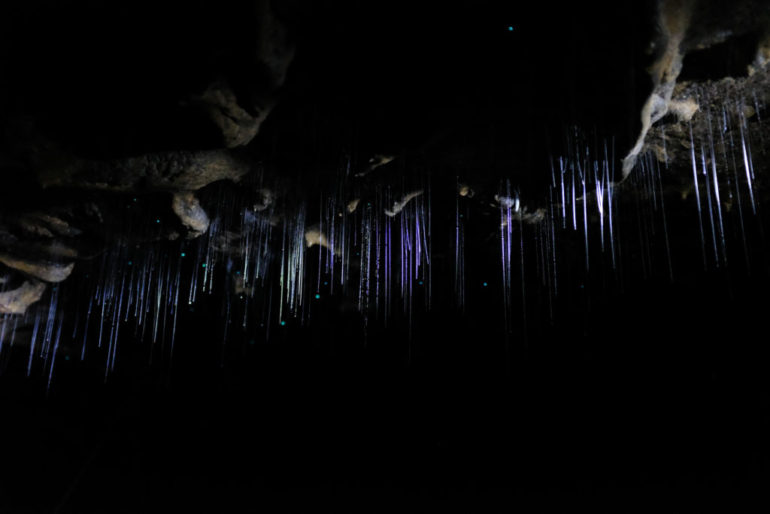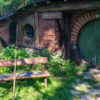Installations like Yayoi Kusama’s infinity room and Team Lab’s work are mesmerizing—but the natural lights from glowworms in caves reminded me that nature is the best designer out there.
When I was younger, I frequently spent summer evenings in fields around my neighborhood, searching for fireflies. There was something about the blinking lights floating through the air that felt so magical.
On lucky days, I caught one of the fireflies. Cupping it between my hands, I’d peer at the bug through a small hole between my thumb and index finger before releasing it into the wild once more.
Flash forward, and it’s been years since I’ve been able to witness those types of lights in nature.
Instead, I’ve only witnessed the man-made: Yayoi Kusama’s infinity rooms, Team Lab’s digital spaces, or Pipilotti Rist’s Pixel Forest.
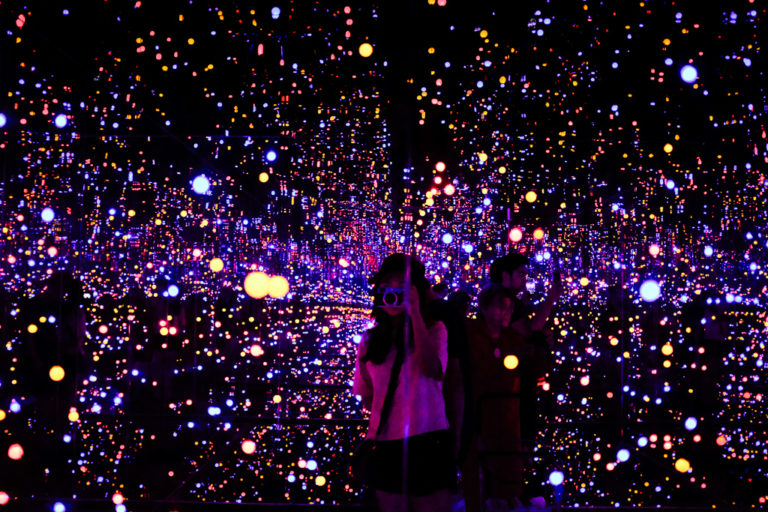
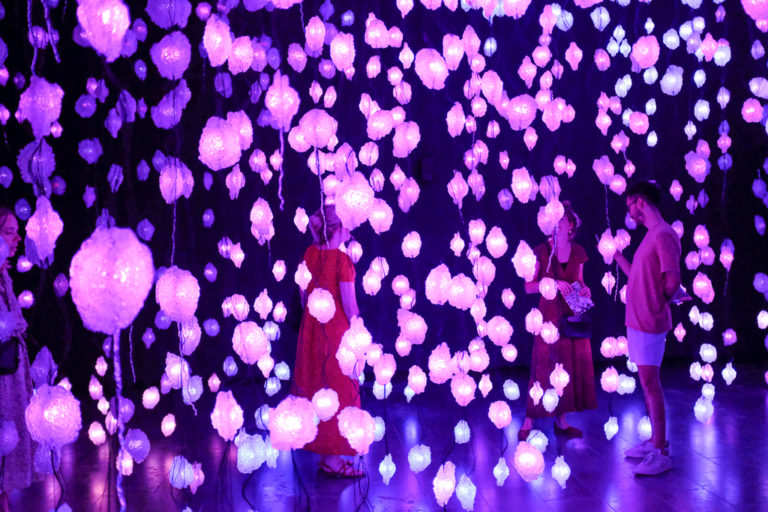
Needless to say, I was excited when I learned there were glow worms in New Zealand, and we ventured into a cave near Waitomo where many of them reside.
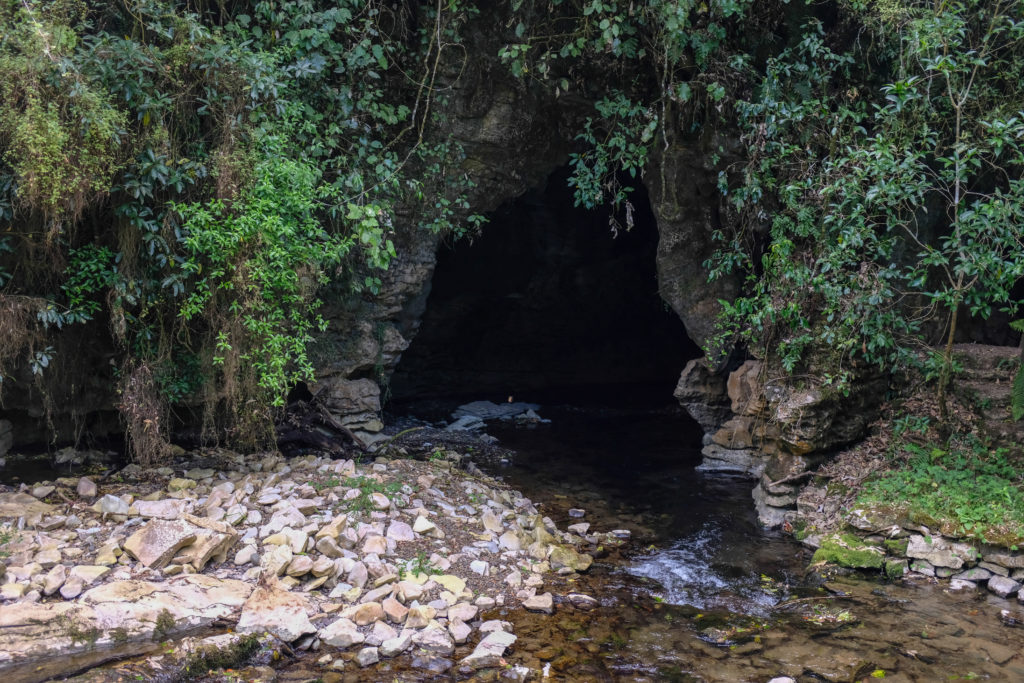
The first thing I noticed was the chandelier-like silk threads hanging from the ceiling.
We learned that they’re coated with sticky mucus, so that glow worms can catch the small flying bugs who are attracted to their light. (As a fun fact, glow worms are deaf and blind, so they can’t even see their own light—it’s just used to draw in other creatures).
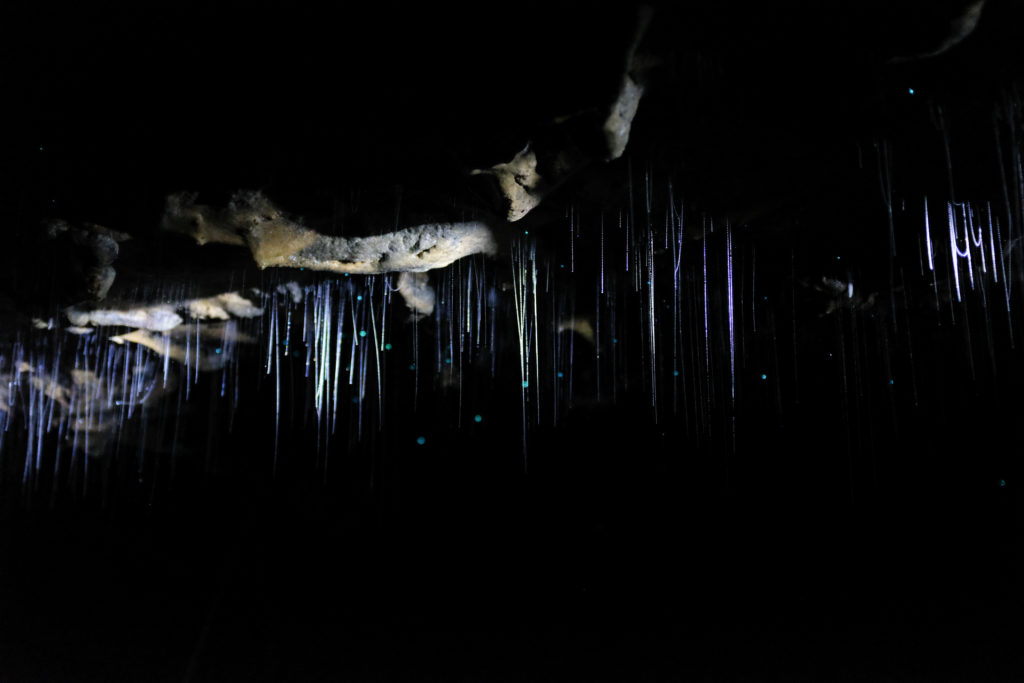
We made our way to a small river within the cave and stepped into a boat. Our guide told us to shut off all light sources, so that our eyes could adjust to the dark. After several minutes, our night vision kicked in, and it felt like a Polaroid photo was developing before our eyes.
I saw dots of blue, then slowly the outlines of the cave walls, and finally the reflection of all the lights in the water. I thought it was beautiful that the Maori people refer to glow worms as titiwai, which means “lights reflected/projected in water.”
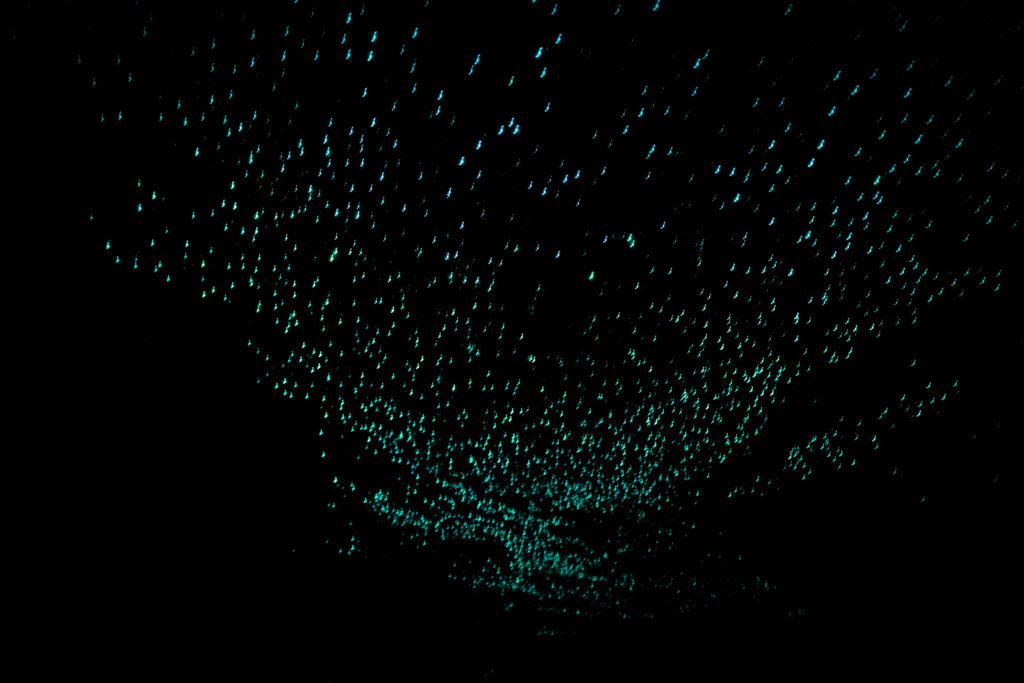
It was an experience created by nature, with lights emanating from living creatures.
We try to replicate these feelings of awe, again and again, through art and immersive installations. However, that day I was reminded that the natural will always reign over the artificial. As Marcus Aurelius aptly put it: “There is no nature which is inferior to art, for the arts imitate the nature of things.”

